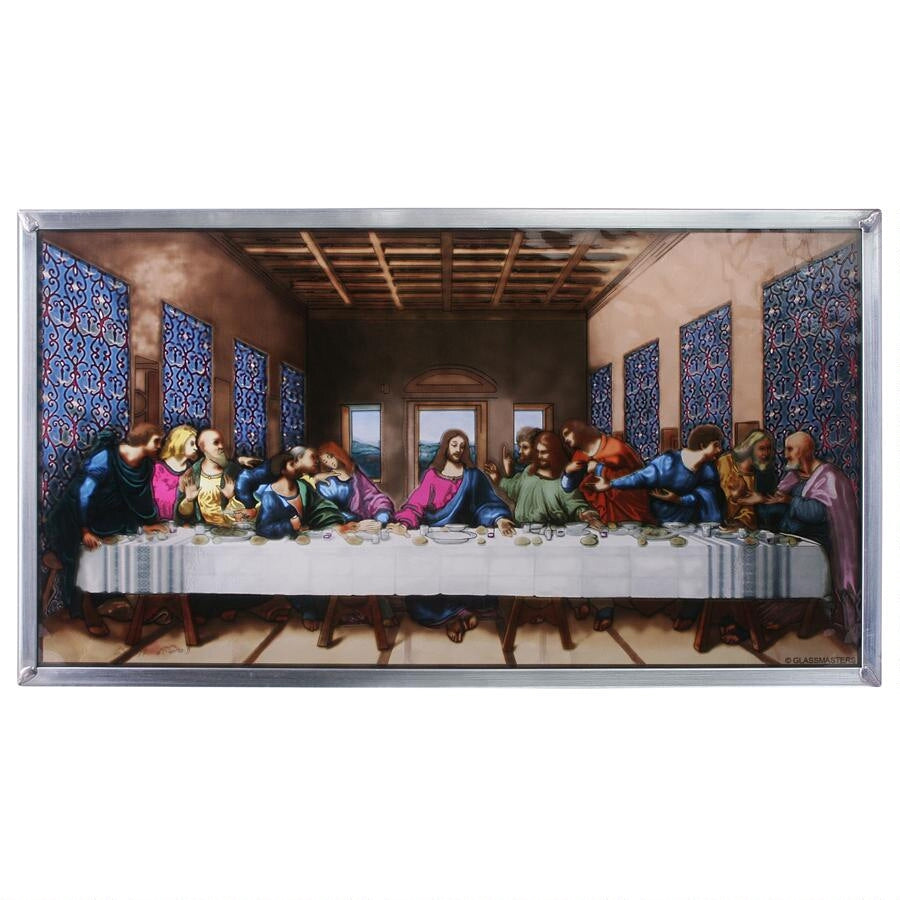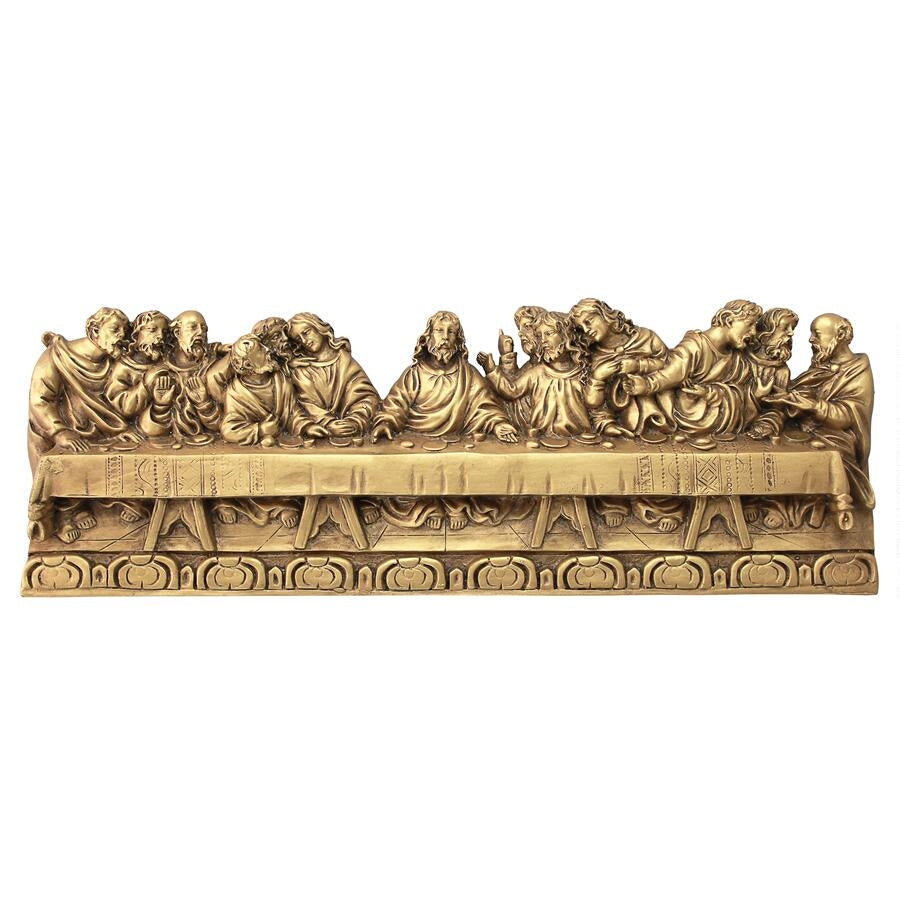Critics and the general public have always been struck by the subtlety, hidden meanings, and aesthetic appeal of Leonardo da Vinci's artwork. But several of his works have become cult favorites, inspiring a plethora of interpretations and having a profound effect on the world of art and society. The Last Supper is one of the maestro's renowned religious pieces, and here are some facts about the Last Supper.
Contextualizing the Last Supper
Three years after construction began in 1495, this late 15th-century mural painting was finished. One of Vinci's most famous paintings, it is housed in the Santa Maria delle Grazie Convent in Milan.
The size of the original picture is 15.8 feet by 28.8 feet, or 4.6 meters by 8.8 meters. The subject is the final dinner that Jesus and his followers eat together before Judas betrays him. In actuality, the artwork is a depiction of the incident as it is recorded in the Christian New Testament. It portrays the apostles' response to Christ's revelation that one of them would betray him.
The Last Supper Leonardo Da Vinci Facts
Leonardo used ingenuity to achieve the perspective of the picture.
The Last Supper by Leonardo da Vinci is especially amazing because of the brilliant use of perspective by the great artist. Every single aspect of the picture draws attention to Christ's head, which is in the center of the composition—possibly the best example of one-point perspective in existence. Da Vinci achieved this by precisely nailing the painting's focal point—the wall of Jesus' temple. He painted the other components of the piece in a way that brought the viewer's attention back to Christ by projecting thread in different ways from the nail to aid in his perspective of the space.
The drawback of this arrangement was that da Vinci was compelled to paint a few of the followers in a rather unappreciative rear view. Leonardo had hoped for an emotive portrayal of each of the twelve apostles, but this went against his wishes. However, a circular table would not offer enough room to take advantage of the scene's dramatic features.

Not only is The Last Supper art, but it's also arithmetic.
Leonardo da Vinci, an inventor and engineer, was well renowned for incorporating mathematics into all of his creations, including his paintings. The majority of human proportions, as demonstrated by Da Vinci's drawings, may be understood mathematically using the Golden Ratio.
Many claim that the Last Supper contains mathematical meaning in addition to the Golden Ratio. There are references to three, which stands for the Holy Trinity, most likely. There are three windows, the disciples are seated in groups of three, and Jesus is pictured with his arms outstretched in the shape of a triangle.
The art has undergone numerous paint jobs, touch-ups, and near-demolitions.
It is ironic that the painting technique selected, also known as “the last supper painting secrets,” was known to save time but ended up costing him time. The refectory wall required numerous repaints. Further historical events also diminished the artwork. The picture was hanging on a wall when the monastery erected a door in 1652, cutting out some of the details, such as Jesus' feet.
He utilized well-known faces, perhaps even his own.
According to most sources, the apostles' faces in Leonardo da Vinci's The Last Supper are actually the faces of real individuals. He reportedly hung out with Milanese criminals and jail inmates in search of a suitable face and expression for Judas, the apostle who ultimately betrayed Jesus, and the fourth figure from the left.
It's possible that he painted the wall mural himself! Some art historians claim that da Vinci painted his actual likeness as St. James the Less, though this has never been confirmed. Perhaps the apostle resembled the painter a lot!
It's not a mural
Contrary to popular opinion, this famous painting is not a fresco. Dry plaster is not used to paint frescos. Deviating from the standard procedures also caused the job to deteriorate.
Numerous restorations have been made to the picture.
It is one of those well-known Christian artworks that has undergone numerous restorations in order to withstand the test of time. Da Vinci's experiment with tempera on stone did not turn out well. The paint began to flake and deteriorate in the sixteenth century. A number of restoration attempts failed to save much of the original picture.
Its cuisine's significance is debatable.
It is stated that the salt that spilled before Judas symbolizes his treachery, or perhaps it is interpreted as symbolizing his misfortune in being the one picked to betray. The readings on the fish that was served are also unclear. If it is intended to be eel, it might stand for brainwashing and hence for faith in Jesus. If it's a herring, though, it might represent someone who rejects religion and is not a believer.

Every figure has a distinct function, and together they form an emotive totality.
Although Da Vinci's painting of the Last Supper was not the original depiction of the well-known biblical scenario, it did alter the picture somewhat due to the apostles' unique facial expressions and the close-knit atmosphere they produced.
Christ's declaration shocks Bartholomew, James the Less, and Andrew, who raises his hands to silence the speaker. John, Peter, and Judas compose the following trio: While John appears weak and Peter is furious, Judas's face is hidden from view. Judas was previously depicted as being to the side, apart from the others.
Instead, Judas is depicted by Leonardo as being part of the group but literally separated from Christ's light due to a shade covering him. Following Christ are Thomas, Philip, and James the Greater, who are correspondingly furious, astounded, and perplexed. The final three are Matthew, Thaddeus, and Simon; the first two turn to the latter for clarification.
Not on Exhibition in a Museum
Unlike several of Leonardo da Vinci's other works, The Last Supper is not kept in a museum. It is kept up in Milan, Italy's Santa Maria delle Grazie convent. Within the convent, The Last Supper is depicted on the north wall of the dormitory. In order to stop the artwork from further deteriorating owing to external causes, the refractory has been transformed into a controlled room.
Numerous Significance
Da Vinci's use of mathematics and numerological elements in his works is widely recognized, and The Last Supper is no exception. The Holy Trinity is represented by number 3, which is portrayed in this picture in a variety of ways. There are three windows behind each group of three apostles that are present. Jesus is depicted in the picture as a triangle as well.
Even now, research is ongoing, and we still don't have all the answers.
Leonardo da Vinci's Last Supper is the subject of numerous theories, conspiracies, and myths, many of which are detailed in the well-known Dan Brown book The Da Vinci Code. In addition, there are countless actual details concerning the well-known painting that we just do not know. Why did he select those specific foods? The bread is leavened; why? How come Judas' plate is empty? Although it is true that da Vinci frequently included symbolism and commentary in his works of art, we are unable to confirm this without any written evidence.
Check our collection on Leonardo da Vinci's Last Supper
















